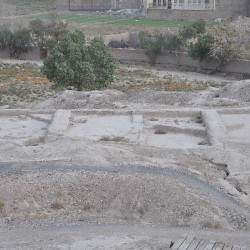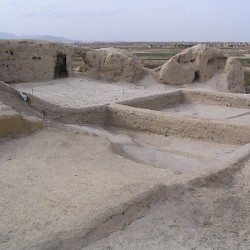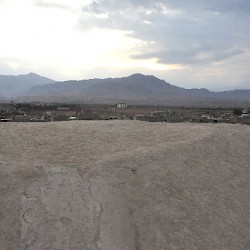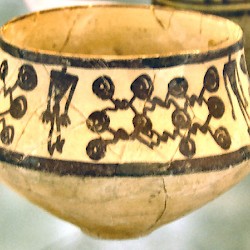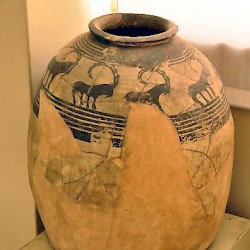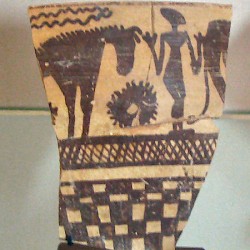Tepe Sialk
Q1581555Tepe Sialk: one of the most important prehistoric excavations in Iran.
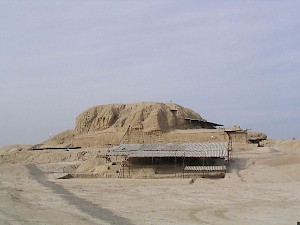
Situated directly southwest of moden Kashan in Iran, the archaeological complex known as Tepe Sialk consists of two hills, about half a kilometer apart, and two cemeteries, known as A and B. The excavators have distinguished six main phases of occupation.
The oldest settlement has been identified in the northern hill and belongs to the first half of the fifth millennium BCE. The inhabitants, primitive peasants, lived in simple huts, made of reeds and covered with mud. Among the finds are stone axes and objects made of bone.

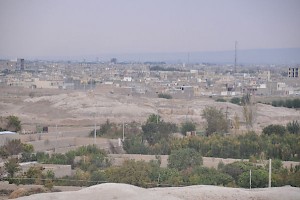
In the second period, the villagers of the northern hill lived in houses, made of irregularly-shaped mud bricks. They were capable of making some primitive ceramics, which was made to resemble baskets. The dead were buried, painted red and laid down in a contracted position, under the floors of their houses, a custom that is also known from Iraq. The smiths had, by now, fully mastered their art; the quality of the metal objects of this age is higher than in the preceding period.
At the beginning of the fourth millennium, the northern hill was abandoned, and the southern hill was occupied, probably by descendants of the people who lived on the northern hill. In this third period, the houses were made of rectangular bricks. The dead were still buried underneath the floors. The most impressive cultural advance was the introduction of the potter's wheel: the new ceramics, decorated with animal and human figures, were dazzlingly beautiful, comparable to the fourth millennium pottery of Susa. The smiths were now capable of handling silver, and people were trading with the inhabitants of Khuzestan: archaeologists have found shells. A great fire put an end to this town; it is possible that it was captured by enemies.
The fourth period was more or less contemporary with the Early Dynastic Period in southern Iraq, and lasted from about 3000 to 2500 BCE. Although the ceramics of this age were plainer than the pottery of the fourth millennium, there is no doubt that there had been great progress. Cylinder seals prove that interregional trade flourished, there is evidence that the people had learned to read and write in a proto-Elamite cuneiform script, and the inhabitants were now capable of making bronze. The prosperity of this age can also be deduced from the construction of a ziggurat, which is the largest and tallest structure in the southern hill, and the oldest monument of this type in Iran. It had three platforms and was ascended from the south.
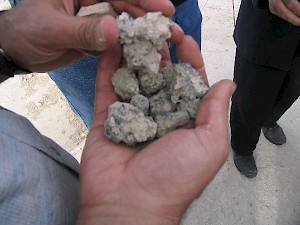
The site appears to have been abandoned for the remainder of the Bronze Age, and when people started to settle again in c.1200 BCE, the beginning of the fifth period, they may not have realized that they were actually living on an ancient ziggurat. After all, in thirteen centuries, the old bricks had eroded, and the hill consisted of a mixture of adobe, dirt, and a few visible architectural fragments - not enough to understand what it actually had been.
It seems that the new settlers leveled the top of the mound, to make space for a large, palace-like residence. The southern hill was surrounded by a wall. By now, people were able to melt iron and made an easily recognizable grayish type of pottery. The dead were buried on cemetery A, about 200 meters south of the southern hill.
The final, sixth period, started about 900 BCE, when the fifth town was destroyed. The conquerors build a new city on top of the old one, but otherwise, there is no continuity. For example, the newcomers buried their dead on cemetery B, about 250 meters west of the southern hill. It is possible that the invaders belonged to the great immigration of Iranian-speaking peoples. They were certainly the people who made the pots with the long-beaked sprouts for which Tepe Sialk is famous.
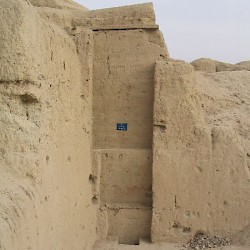 Tepe Sialk, Strata |
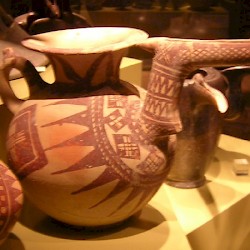 Tepe Sialk, Early first millennium beak pot |
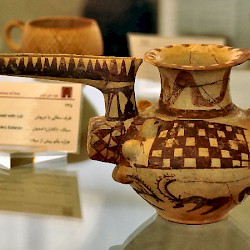 Tepe Sialk, Early first millennium beak pot (2) |
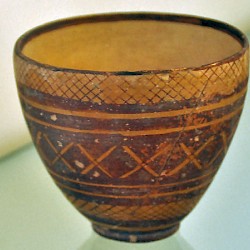 Tepe Sialk, Cup from the first millennium |
Tepe Sialk was destroyed in the eighth century BCE.
The first excavation took place in 1933, and was directed by Roman Ghirshman; there were two further campaigns in 1934 and 1937. Seventy years later, a team of Iranian archaeologists led by Sadegh Malek Shahmirzadi launched the Sialk Reconsideration Project, investigated the two hills again (1999-2004).
Getting there
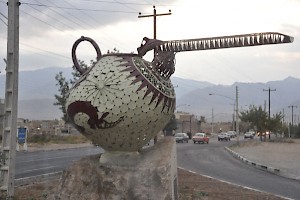
Tepe Sialk is located to the southwest of the modern city of Kashan, along the road that leads to the splendid Fin Gardens (Amir Kabir Street). When you see a roundabout decorated with a giant beak pot, go in the direction of the beak, and you will reach the southern hill. The northern hill is not accessible.

